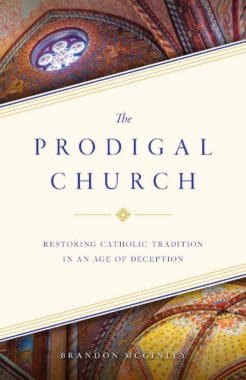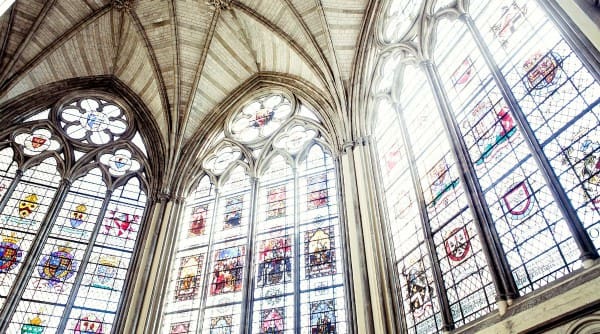There’s a way of being in the modern world that we perceive to be normal and natural, and it goes something like this: rushing from place to place to meet our work or other “practical” responsibilities, spending downtime either obsessing over those responsibilities or mindlessly scrolling online in order to distract ourselves from them, fitting in friends and family in the interstices, and maybe carving out an hour a week for God. But, as we stressed at the beginning of chapter 3, being is necessarily about relationship with the living God. Living as if He doesn’t exist, or is indifferent to our existence and what we make of it, may be “normal” these days, but it’s not natural, and it’s not neutral.
There’s no neutral way to be in the world. We’re either performing our duties to God and our fellow men, or we’re not. We’re either living in and reflecting His light to others, or we’re absorbing it into our own darkness and denying it to others. We’re either growing closer to Him, or we’re receding from Him. And when the parish and its proper orientation toward the Lord recede from our personal and community consciousness, the rest of the world rushes in.
At its very best, the parish can be a node of a better, more real way of being in the world — one where our relationship with Christ is always front and center. If the allocation of our time is more about who than when, then the parish can fulfill its supernatural purpose best by being a place where the people of God can be together with our Lord as much as possible. The parish can make it more visibly possible to organize our lives around Him by offering communal chances to do so.
A simple way to do this, in addition to incorporating the Liturgy of the Hours in some way, is to integrate the liturgical calendar more concretely into parish life. Solemnities and patronal feasts should play a greater role in the lives of the faithful than Presidents’ Day or Columbus Day, and this begins with the parish’s treating them as more important. It’s about more than the vestment color and the Propers of the Mass — though educating the faithful about these would be a good hook. It’s about making the parish a place where these feasts can be really celebrated, liturgically and socially.
This could begin simply by making the liturgical calendar a priority in communications with parishioners. The faithful should be at least as aware of the upcoming liturgical feasts, and the opportunities to celebrate them at the parish or at home, as they are of the upcoming Boy Scout bake sale. In fact, pegging fundraisers and other parish events to feasts rather than to convenience is a simple pious practice that gently emphasizes the supernatural and acknowledges the saintly assistance that makes all our efforts profitable. Placing the annual parish festival on or near the parish’s patronal feast — including a special Mass and the feast’s office of prayers — rather than the date considered maximally profitable is a small act of faith that the patron is more than a mascot.
The parish’s invitations to the outside world should also be about more than its “secular” offerings. Integrating Mass and the Liturgy of the Hours into these events is a way to consecrate them, but the parish should also communicate its distinctly spiritual offerings to the wider community. In this way, again, it manifests its supernatural purpose and invites the world to more than an encounter with a healthy human community, which is a necessary but an insufficient condition of evangelization. Rather, the parish must invite the world to an encounter with Christ.
Many years ago our Pittsburgh neighborhood was home to the region’s Maronite Catholic parish; the church has moved to the suburbs, but a disproportionate number of Arab Christians still live in the area, including the owners of a celebrated Lebanese bakery and café. Recently relics of the Lebanese mystic St. Sharbel passed through town, and the parish hosted an opportunity for veneration of the relics and Eucharistic adoration. Instead of communicating this through distinctly Catholic channels, the parish produced fliers, featuring a glorious monstrance and the hooded visage of the saint, and placed them in the windows of several shops in our neighborhood. This was a parish that communicated its distinctive offering to the world — what it can offer that no other community or institution can. And in a simple way it made Christ present in the everyday life of the neighborhood.
My dream would be for it to be normal for parishioners to spend time at least once a week at the parish for a liturgical or para-liturgical event other than Sunday Mass — a party or seminar or fundraiser pegged to a feast. This is obviously a stretch goal, especially in places where numbers of priests and parishioners are dwindling. But we need goals that, like heaven itself, sometimes feel unreachable to orient us in the right direction. And ultimately a renewed Church is one where parish life demonstrates that it is possible, through grace, to live oriented first toward the Lord, not toward the next promotion or hookup or election.
+
This article is adapted from a chapter in The Prodigal Church, by Brandon McGinley, which is available from Sophia Institute Press.

Art for this post on the Liturgical Living: Cover and featured image used with permission.




